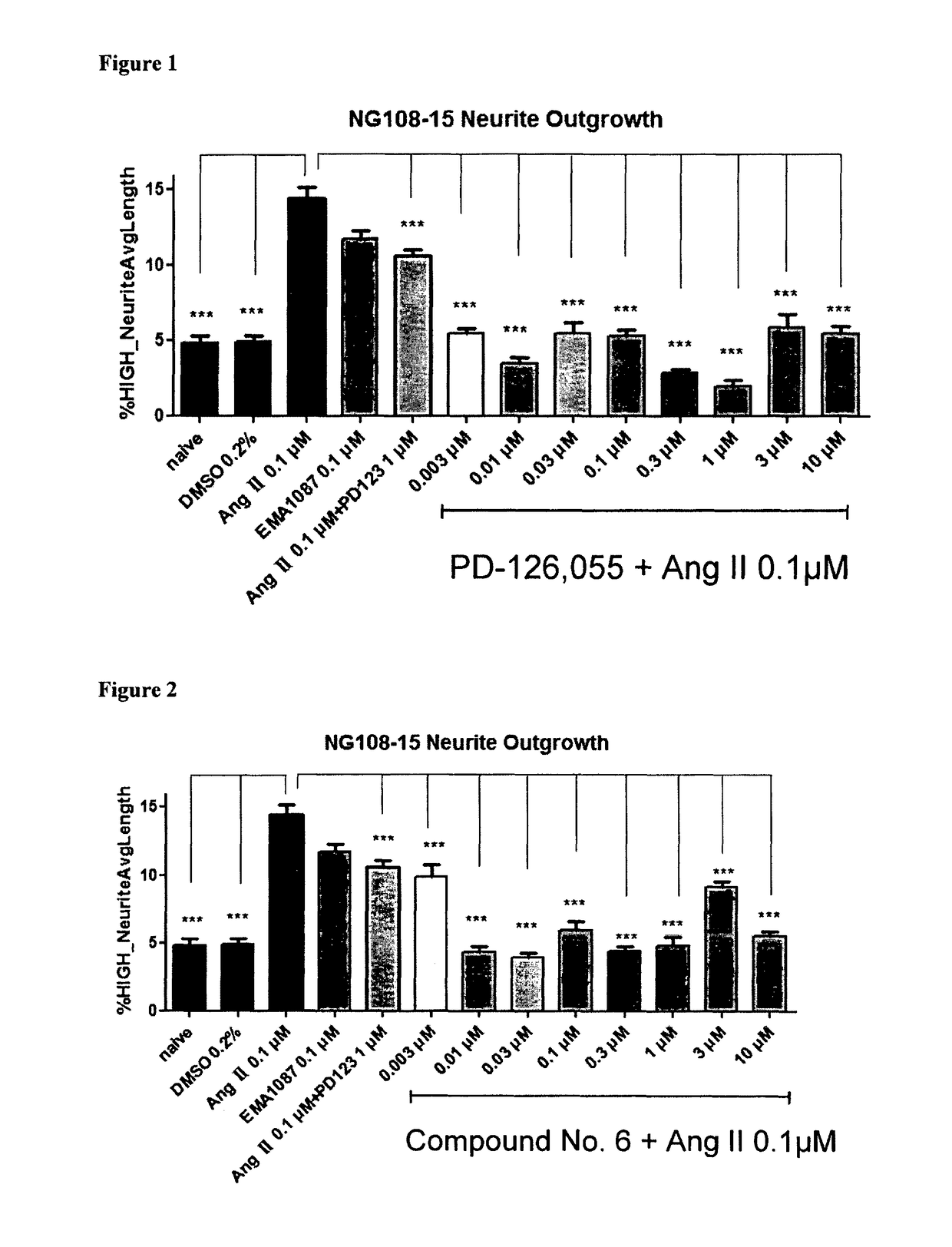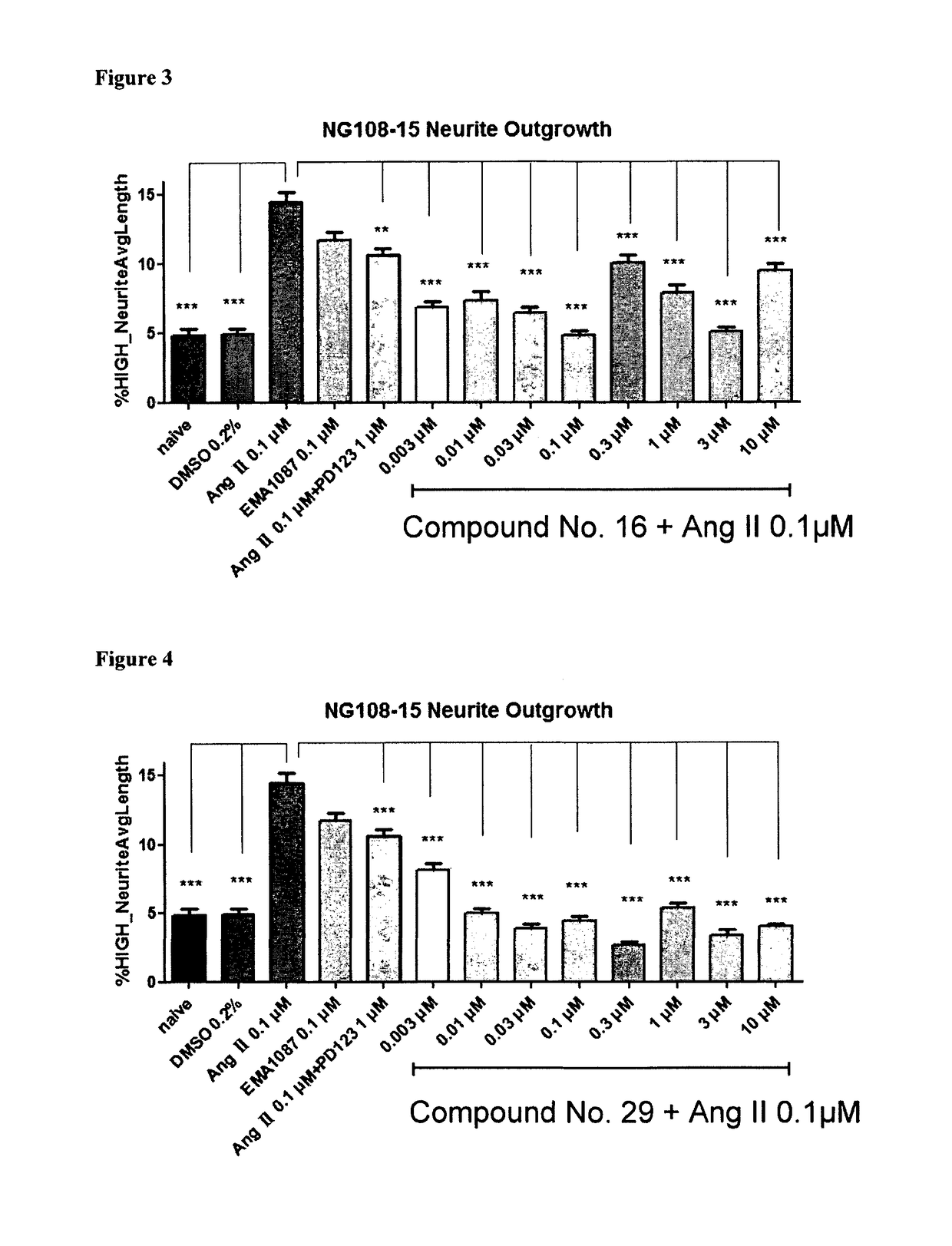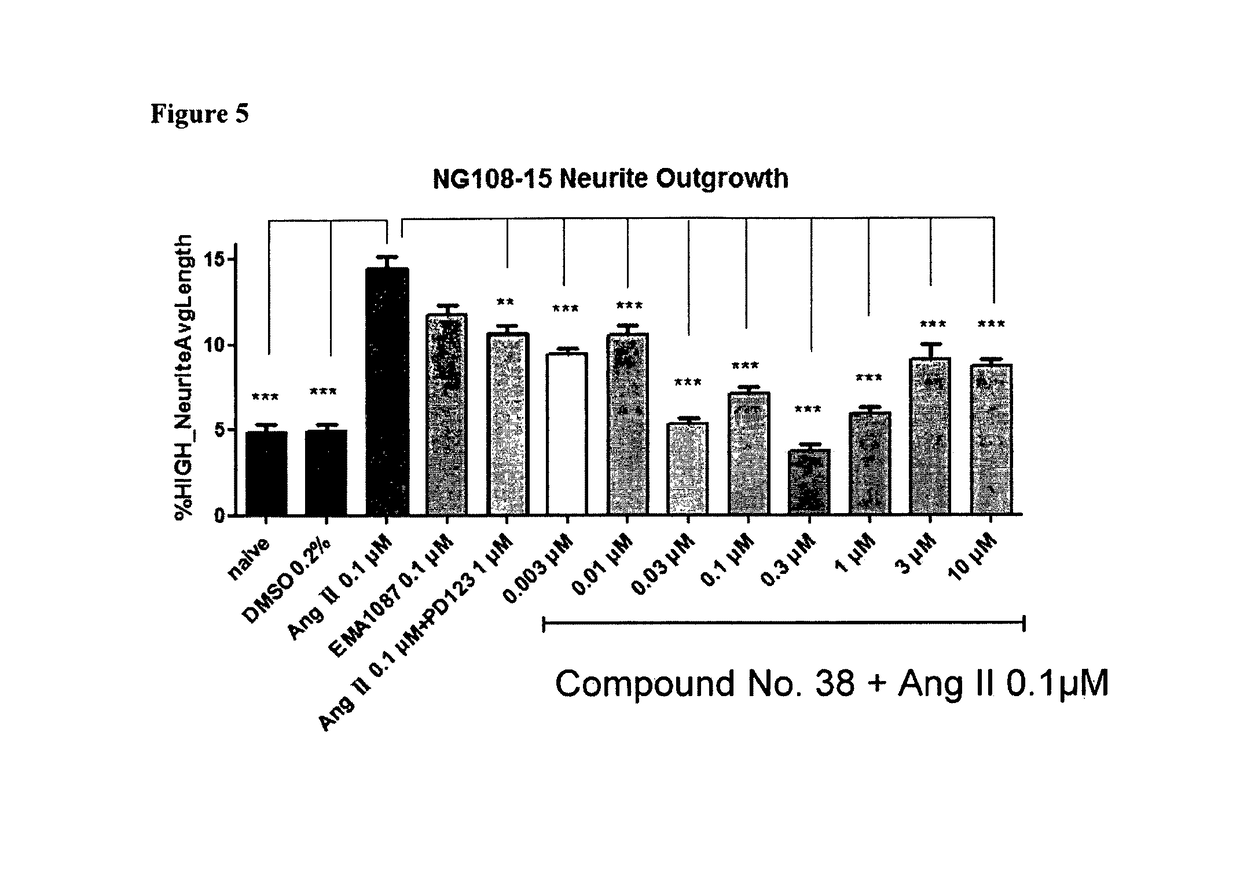Heterocyclic compounds and methods of their use
a heterocyclic compound and compound technology, applied in the field of compounds, can solve the problems of inflammatory pain, neuropathic pain, difficult to treat, and impaired nerve conduction velocity and other types of pain, and achieve the effects of treating or preventing inflammatory pain, and preventing neuropathic pain
- Summary
- Abstract
- Description
- Claims
- Application Information
AI Technical Summary
Benefits of technology
Problems solved by technology
Method used
Image
Examples
example 1
Compound 2 (2S,4S)-4-(benzyloxy)-1-(2,2-diphenylacetyl)pyrrolidine-2-carboxylic acid
1. Procedure for the Preparation of Compound 2b
[0276]
[0277]A solution of diphenylacetic acid (5.0 g, 23.6 mmol) in thionyl chloride (30 mL) was heated at reflux for 30 min. The mixture was then concentrated in vacuo and the residue was dissolved in ether (10 mL) and added to a mixture of compound 2a (3.76 g, 25.9 mmol) and NaHCO3 (5.95 g, 70.8 mmol) in water (50 mL) and ether (20 mL) at 0° C. After addition, the mixture was stirred at RT for 2 h, TLC (EA:PE=1:1) showed the starting material was consumed. The product was collected by filtration and the obtained filter cake was dissolved in EA (50 mL), washed with brine (30 mL×3), dried over Na2SO4, filtered and concentrated in vacuo to give 2b as a white solid (6.5 g, 74%). LC-MS (Agilent): Rt 4.86 min; m / z calculated for C20H21NO4 [M+H]+ 340.2, [M+Na]+ 362.1, found [M+H]+ 340.2, [M+Na]+ 362.1.
2. Procedure for the Preparation of Compound 2c
[0278]
[0279...
example 2
Compound 3 (2S,4R)-4-(benzyloxy)-1-(2,2-diphenylacetyl)pyrrolidine-2-carboxylic acid
1. Procedure for the Preparation of Compound 2a
[0288]
[0289]To a stirred mixture of 3a (5.0 g, 38:1 mmol) in MeOH (50 mL) was added SOCl2 (5 mL) dropwise and the mixture was heated at reflux for 7 h, TLC (DCM:MeOH=10:1) showed the starting material was consumed. The MeOH was removed in vacuo to give 2a (6.0 g) as white solid, which was used for the next step directly. LC-MS (Agilent): Rt 0.87 min; m / z calculated for C6H11NO3[M+H]+ 146.1, found [M+H]+ 146.1.
2. Procedure for the Preparation of Compound 3b
[0290]
[0291]To a stirred solution of 2a (4.0 g, 27.5 mmol) and Et3N (3.3 g, 33.1 mmol) in DCM (40 mL) was added (Boc)2O (7.22 g, 33.1 mmol) at 0° C. under N2 and the mixture was stirred at RT for 5 h, TLC (DCM:MeOH=20:1) showed the starting material was consumed. The reaction was quenched with water (30 mL), the layers were separated and the aqueous phase was extracted with DCM (20 mL×2). The combined o...
example 3
Compound 5 (2S,4S)-4-cinnamyloxy-1-(2,2-diphenylacetyl)pyrrolidine-2-carboxylic acid
1. Procedure for the Preparation of Compound 5a
[0300]
[0301]To a stirred suspension of 2e (2.0 g, 5.89 mmol) and Ag2O (1.64 g, 7.07 mmol) in DCM (25 mL) at 0° C. was added cinnamyl bromide (1.4 g, 7.07 mmol) at 0° C. and the mixture was stirred at RT overnight, TLC (PE:EA=1:1) showed most of the starting material was consumed. The reaction was filtered and the filtrate was concentrated in vacuo. The residue was purified by chromatography (PE:EA=10:1 to 5:1) to give 5a as a colorless oil (270 mg, 10%). LC-MS (Agilent): Rt 5.43 min; m / z calculated for C29H29NO4 [M+H]+ 456.2, [M+Na]+ 478.2, found [M+H]+ 456.1, [M+Na]+ 478.1.
2. Procedure for the Preparation of Compound 5
[0302]
[0303]To a stirred solution of 5a (270 mg, 0.59 mmol) in THF (7 mL) and H2O (3 mL) was added LiOH.H2O (37 mg, 0.87 mmol) at 0° C. and the mixture was stirred at 0° C. for 0.5 hour, TLC (MeOH:DCM=1:10) showed the starting material was...
PUM
| Property | Measurement | Unit |
|---|---|---|
| temperature | aaaaa | aaaaa |
| temperature | aaaaa | aaaaa |
| particle size | aaaaa | aaaaa |
Abstract
Description
Claims
Application Information
 Login to View More
Login to View More - R&D
- Intellectual Property
- Life Sciences
- Materials
- Tech Scout
- Unparalleled Data Quality
- Higher Quality Content
- 60% Fewer Hallucinations
Browse by: Latest US Patents, China's latest patents, Technical Efficacy Thesaurus, Application Domain, Technology Topic, Popular Technical Reports.
© 2025 PatSnap. All rights reserved.Legal|Privacy policy|Modern Slavery Act Transparency Statement|Sitemap|About US| Contact US: help@patsnap.com



